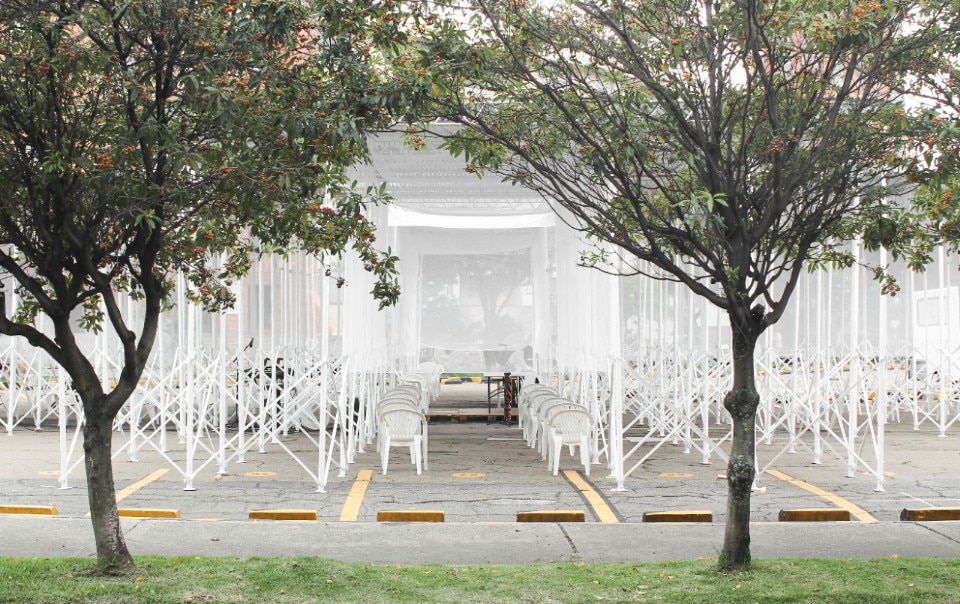This article was originally published on Domus 1084, November 2023.
On 20 March 2020, New York City officially closed due to the Covid-19 pandemic. We, like many others, escaped to our country home for what we thought would be a couple of weeks. On 30 March 2020, we came back to NYC to check the situation, our businesses and apartment. We weren’t prepared for what we saw. The city was silent, there were very few people in the streets, and those who were outside appeared dazed and confused. It was heartbreaking, and for the first time I realised that something completely foreign, devastating and incomprehensible had descended upon us.
As Joan Didion poignantly observed: “Life changes in the instant. The ordinary instant” (The Year of Magical Thinking, 2005). The unthinkable was happening before our eyes. Suddenly, fantastic elements had settled into our reality, and we were existing in a Gabriel García Márquez novel – a realm of magical realism. Magical realism is an existential condition of our post-colonial reality in Latin America. Our culture is based on oral traditions. We love to gather and share stories. It’s circular communication and part of our everyday lives.

García Márquez didn’t create new realities; he just relayed what he saw and what people told him. He connected our daily life with fantastic elements. In his famous novel One Hundred Years of Solitude (1967), a host of yellow butterflies follow the character of Mauricio Babilonia. They are seen as symbols of unrequited love, continuity and transformation. In my hometown of Pereira, Colombia, my own mother always felt accompanied by butterflies, and it gave her great joy. This new reality posed both new challenges and new possibilities, including in architecture. Although architecture and magical realism are rooted in two different disciplines, there are a lot of connections between them, including breaking boundaries and the ability of both to dream and create magic.
When disciplines come together, disruption and innovation happen. This is what Alejandro Saldarriaga Rubio, founder of Alsar-Atelier, did with his architecture when was unable to leave Bogotá, Colombia, during the pandemic. The question that Saldarriaga poses is: “Can a post-pandemic typology emerge from the state of magical realism that humanity lived through and be reapplied to the chronic crisis of the public realm?” The answer is yes.

In his first ephemeral structure, an outdoor restaurant called La Perseverancia, he and a team of designers – including GB Urban Studio, Taller Architects and the Sociedad Colombiana de Arquitectos (SCA) – built a three-storey public structure with textiles and pre-existing scaffolding material donated by Layher. When I think of scaffolding material, I think of George Nakashima’s book The Soul of a Tree: A Woodworker’s Reflections (1981), where he transformed discarded pieces of wood to create beautiful new works.
The same can be said about the transformation of the scaffolding into poetic spaces. The undulating fabric provided a visual image of sails, but also served to create the distance that the pandemic forced us to maintain. The people loved it. In the US, several cities responded to the pandemic in a similar way, creating outdoor spaces for dining that helped restaurants survive, and allowed us to leave our homes and gather in familiar places.
In New York, these spaces were so successful that they have become permanent. During Easter 2021, Saldarriaga’s Alsar-Atelier oversaw the building of another temporary structure with GB Urban Studio and SCA: a crucifix-shaped open-air chapel. It stood for only four days, but Alhambra’s Cross was an invaluable gift to the community, a haven of spirituality for prayer and meditation connecting people and their surroundings.

Lastly, the Fog Catcher is a collaboration between Alsar-Atelier, Oscar Zamora, César Salomón and SCA. This inspiring project was commissioned by Salomón himself, the leader of the San Luis neighbourhood, and created via a self-build process. To collect water from the fog and rain, the team built a steel frame wrapped in a plastic fabric called polisombra. The structure also produced a greenhouse effect that allowed planting to take place at its base, enriching the work with a poetic gesture. The pyramidal aspect has many references to our pre-Columbian imagery.
The Fog Catcher’s height and softness inspire hope and possibilities, but also offer a potential answer to the local climate crisis. All these ephemeral structures have created spaces that are more humane, dignified and democratic. Suddenly, the magic spaces become real. People started to dream and the usually invisible individuals – especially first responders – became visible. The pandemic made us think outside the box and connect us to our creativity, and that’s where magic is born. Recently, Tom Eccles, executive director of the Center for Curatorial Studies at Bard College, said: “Curators today aren’t just in dialogue with artworks, they’re also in dialogue and engaged with communities.” We can say the same about architecture and magical realism. Let’s allow imagination t o play a role in the creation of new spaces and bring Saldarriaga and his team’s typology to these structures around the world. Together, let’s create a new quilt of dreams.
Timeless icons: the Marenco sofa by arflex
Designed by Mario Marenco, this masterpiece of Italian design has set the standard for over fifty years.















